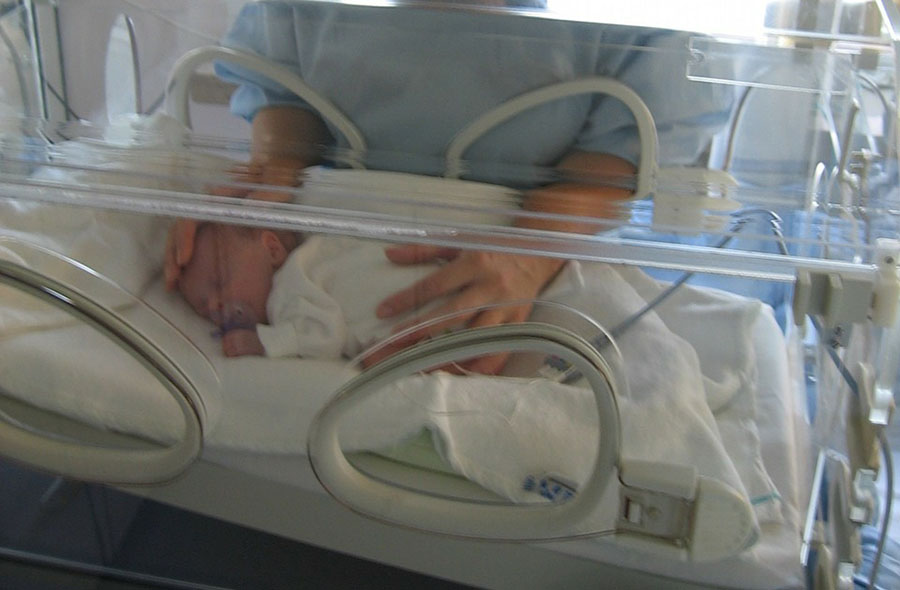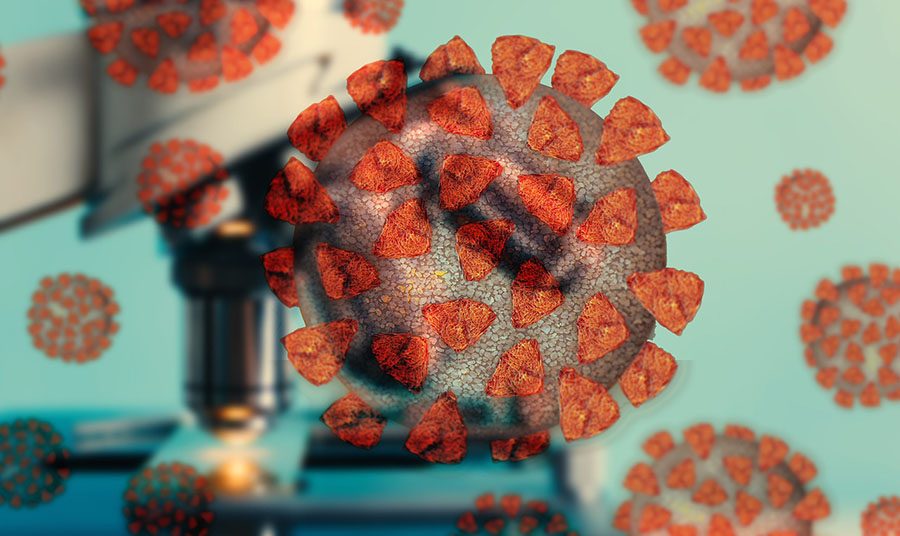The Life Sciences Report: Dr. Day, you're both a researcher and a clinician at the University of Utah. Can you tell us more about yourself?
Ronald Day: I'm a pediatric cardiologist. I've been at Primary Children's Hospital for 27 years. Before that, I trained at the University of California, Los Angeles (UCLA). I developed an interest in nitric oxide at UCLA while working with Louis Ignarro. He is one of the people who was awarded the Nobel Prize for discovering that nitric oxide is the endothelium-derived relaxing factor.
As a pediatric cardiologist, I take care of children with congenital heart disease and children who have high blood pressure in their lungs, or pulmonary hypertension. Most of my research has been related to the evaluation and care of children with congenital heart disease and pulmonary vascular disease. My experience in basic science research is limited.
I have studied the use of nitric oxide to treat pulmonary hypertension. I have also studied the use of nitric oxide and other medicines during heart catheterization to evaluate the severity of the pulmonary hypertension. Heart catheterization is performed in this setting to determine the most appropriate medication for a given patient.
TLSR: Would you talk about the basics of nitric oxide and how it works? For our readers, I would like to clarify that nitric oxide is completely different from nitrous oxide that is used by surgeons and dentists as an anesthetic. As you mentioned, in 1998 Louis Ignarro, Robert Furchgott and Ferid Murad received the Nobel Prize in Medicine for their research. What exactly were they able to show?
RD: There are numerous ways that blood vessels relax and constrict. Robert Furchgott had a lab where he would mount rings of blood vessels in a chamber of a buffered solution. He evaluated different medications to see how the vessels responded. He was evaluating the effect of carbachol, an acetylcholine-like agent, and demonstrated that the vessels usually constrict.
A new lab technician found that the vessels were relaxing instead of constricting when treated with carbachol. This was different than the expected result. So Furchgott had the insight to see what the technician was doing differently. He found that this technician was delicately preparing and mounting the blood vessels. His vascular rings still had an endothelial layer. They studied the effects of rubbing off the endothelium and leaving the endothelium intact. They discovered that something is being produced by the endothelium that causes vessels to relax when treated with an acetylcholine-like medicine. I believe that is how the term endothelium-derived relaxing factor evolved.
Salvador Moncada, one of the people who didn't get the Nobel Prize, and Louis Ignarro were working different labs. They figured out that the endothelium-derived relaxing factor is nitric oxide.
Healthy blood vessels naturally produce nitric oxide. The production of nitric oxide is decreased in the blood vessels of the lung in some patients with pulmonary hypertension. The blood vessels of the lung will relax in some patients with pulmonary hypertension when they breathe nitric oxide. Nitric oxide selectively relaxes the blood vessels of the lung because nitric oxide is inactivated by an interaction with hemoglobin. The blood vessels of the body are not directly influenced by inhaled nitric oxide. All other available medications for pulmonary hypertension have some effect on the systemic circulation whether they are taken by mouth, inhaled, given through the skin or given intravenously.
TLSR: Is it more effective in children than in adults? Or is it more effective because premature babies have undeveloped lungs?
RD: Several randomized studies showed that using nitric oxide to treat newborns with respiratory failure decreased the need for extracorporeal membrane oxygenation, or ECMO. Around 2000, the FDA approved nitric oxide.
Prior to FDA approval, I was using cylinders of nitric oxide at a cost of about $300. A cylinder would typically last a few days. After FDA approval, I believe the cost of nitric oxide was $3,000 a day, not including additional hospital charges of about $1,500 a day. The treatment was initially capped at about $12,000 per patient per month for the gas alone. The $12,000 per month cap was eventually withdrawn. A colleague recently told me that the cost for nitric oxide gas alone is $5,800 a day for as long as it is used. It has become a very, very expensive therapy. I am not involved in the business practices of the hospital. You may need to confirm with Mallinckrodt Plc (MNK:NYSE) and several hospitals to determine the current total cost of nitric oxide and its delivery in an inpatient setting.
TLSR: What would a normal course of therapy be?
RD: It varies. It is only used for 10-30 minutes during acute vasodilator testing during heart catheterization. Many patients are treated for a period less than one week. However, some care providers have treated patients for several weeks.
TLSR: What company held the drug patent on nitric oxide?
RD: Initially, I believe INO Therapeutics secured the patent for inhaled nitric oxide and a delivery system. Nitric oxide was subsequently provided by Ikaria. I believe Mallinckrodt Plc currently provides nitric oxide for clinical use. Another company called Bellerophon Therapeutics Inc. (BLPH:NASDAQ) has developed a delivery system for home. Bellerophon has been performing clinical trials. Nu-Med Plus Inc. (NUMD:OTC.MKTS) has allowed me to use one of their nitric oxide delivery systems for a research project.
TLSR: Would you talk a little bit more about why nitric oxide is such a good therapy for children to prevent or treat pulmonary hypertension?
RD: I think nitric oxide is helpful for some newborns because their vessels are more responsive, or more likely to relax. This may be related to the duration of their disease. Pregnancy is a finite period (usually less than or equal to 40 weeks). Some of the causes of neonatal pulmonary hypertension, like infection, are treatable. Of note, newborns with relatively clear lungs often have a better response than newborns with extensive lung disease. Newborns with a congenital diaphragmatic hernia and other causes of lung hypoplasia may experience limited improvement when treated with nitric oxide.
There are several causes of pulmonary hypertension. The pulmonary hypertension may improve if the cause is corrected. However, a cause cannot be identified in all patients. Further, the severity of pulmonary hypertension may gradually increase over time. Children and adults may not have symptoms of pulmonary hypertension until they develop advanced stages of the disease. As their disease is developing, the right side of their heart adapts. It becomes stronger and thicker. It beats more forcefully. Symptoms may not occur until the right side of the heart begins to fail. At this stage, the blood vessels may be less responsive to nitric oxide and other medications. In other words, the proportion of patients who respond readily to medical therapy may be small.
I think it is really important to test the response of each patient to nitric oxide, and other medications when possible, during heart catheterization. I occasionally see individual patients who have a great response to nitric oxide. Some patients respond better to one medication than another.
I believe we can potentially use a patient's acute response to a medication to guide long-term therapy. I have long had a dream to conduct a clinical trial with inhaled nitric oxide at home. Many acute responders to nitric oxide will respond well to long-term treatment with a calcium channel blocker. Unfortunately, about 30% will fail calcium channel blocker treatment over time. It would be nice, since you know they respond to nitric oxide, to do a trial where a subset of patients get nitric oxide with a calcium channel blocker, and a subset of patients get a calcium channel blocker alone. This trial could determine whether nitric oxide therapy can prevent treatment failure, or augment the efficacy of treatment, with a calcium channel blocker. It may only target a subset of the total population of patients with pulmonary hypertension. However, we need to develop more trials with a focus on precision care so the right patients are treated with the right drug at the right time.
I am worried that many studies with an aim to treat all patients with pulmonary hypertension may fail. Some patients are simply not going to respond to some therapies. As a result, a drug may fail to be approved, even though a subset of patients may benefit from the treatment.
TLSR: Which brings us back to the high prices of the current gas. Is that limiting the amount of research you can do, and is that also limiting the length of treatment or the number of people treated?
RD: I do not have expertise in billing practices for medications in a hospital or outpatient setting. I believe some medications are used more freely in a hospital setting. It has been difficult to secure coverage for the care of some of my patients at home. I believe this difficulty is a result of the high cost of medications.
Off label treatment is possible. For instance, you may seek prior authorization from an insurance company to treat a child with a medication that has been approved for adults with the same disease. However, some insurance companies still try to exclude treatment for children. In that sense, the cost of therapy is a barrier to providing care.
I have not received support for industry-sponsored studies with inhaled nitric oxide.
TLSR: Would some patients benefit from long treatment?
RD: Potentially, there may be some patients with pulmonary hypertension who are like the patients that acutely respond well to nitric oxide during heart catheterization. We do not yet know that they would respond favorably long term. But I think they are more likely to respond favorably long-term than the group that does not respond. So there is a population that might benefit from treatment long term. Pulmonary hypertension is not a common disease. The market is not large, but treatment might be very effective for some patients.
TLSR: Anything else you would like us to know?
RD: I can comment briefly concerning the technology of the Nu-Med products. I think one product is designed to mimic the product that is already being used in a hospital setting. The portable systems use small cylinders of high purity nitric oxide. It is important to have small cylinders for a portable system during the day. It would also be useful to have small cylinders in the home; the currently used 800 parts per million (800 ppm) tanks are about 4-5 feet in height and about 8 inches in diameter. A small cylinder of high purity nitric oxide would not need to be replaced very often while using the Nu-Med system.
TLSR: What is the difference? Instead of 800 ppm, is it completely pure nitric oxide?
RD: Yes, nearly pure nitric oxide. It would be unsafe to breathe pure nitric oxide. The Nu-Med delivery system can deliver 20 ppm nitric oxide for a long time without changing cylinders. This would be convenient as long as it is safe and effective in an outpatient setting.
TLSR: Thank you so much. I appreciate your time, Dr. Day.
Ronald Day, MD, a pediatric cardiologist at the University of Utah, graduated from the University of Utah with degrees in Chemistry and Medicine. He received his training in Pediatrics and Pediatric Cardiology at the University of California, Los Angeles. He is board certified in Pediatric Cardiology. He is a Professor of Pediatrics and has been a member of the faculty of the University of Utah since July 1991. Dr. Day's clinical interests include pediatric cardiology and pulmonary hypertension. He is the director of the Pulmonary Vascular Disease Program at Primary Children’s Medical Center. Dr. Day’s research interests include (1) the development of methods to improve the diagnostic evaluation and treatment of patients with pulmonary hypertension, and (2) the outcome of patients with congenital heart disease.
Read what other experts are saying about:
Disclosure:
1) Patrice Fusillo conducted this interview for Streetwise Reports LLC and provides services to Streetwise Reports as an employee. She owns, or members of her immediate household or family own, shares of the following companies mentioned in this article: None. She is, or members of her immediate household or family are, paid by the following companies mentioned in this article: None.
2) The following companies mentioned in this interview are billboard sponsors of Streetwise Reports: Nu-Med Plus. Click here for important disclosures about sponsor fees. The information provided above is for informational purposes only and is not a recommendation to buy or sell any security.
3) Dr. Ronald Day: I, or members of my immediate household or family, own shares of the following companies mentioned in this article: None. I, or members of my immediate household or family, are paid by the following companies mentioned in this article: None. I am, or members of his immediate household or family are, paid by the following companies mentioned in this article: None. My company has a financial relationship with the following companies mentioned in this interview: None. I determined which companies would be included in this article based on my experience using nitric oxide and no formal understanding of the sector. I had the opportunity to review the interview for accuracy as of the date of the interview and am responsible for the content of the interview. I have not confirmed the exact costs of nitric oxide mentioned in this interview.
4) The interview does not constitute investment advice. Each reader is encouraged to consult with his or her individual financial professional and any action a reader takes as a result of information presented here is his or her own responsibility. By opening this page, each reader accepts and agrees to Streetwise Reports' terms of use and full legal disclaimer. This article is not a solicitation for investment. Streetwise Reports does not render general or specific investment advice and the information on Streetwise Reports should not be considered a recommendation to buy or sell any security. Streetwise Reports does not endorse or recommend the business, products, services or securities of any company mentioned on Streetwise Reports.
5) From time to time, Streetwise Reports LLC and its directors, officers, employees or members of their families, as well as persons interviewed for articles and interviews on the site, may have a long or short position in securities mentioned. Directors, officers, employees or members of their immediate families are prohibited from making purchases and/or sales of those securities in the open market or otherwise from the time of the interview or the decision to write an article, until one week after the publication of the interview or article.




























































